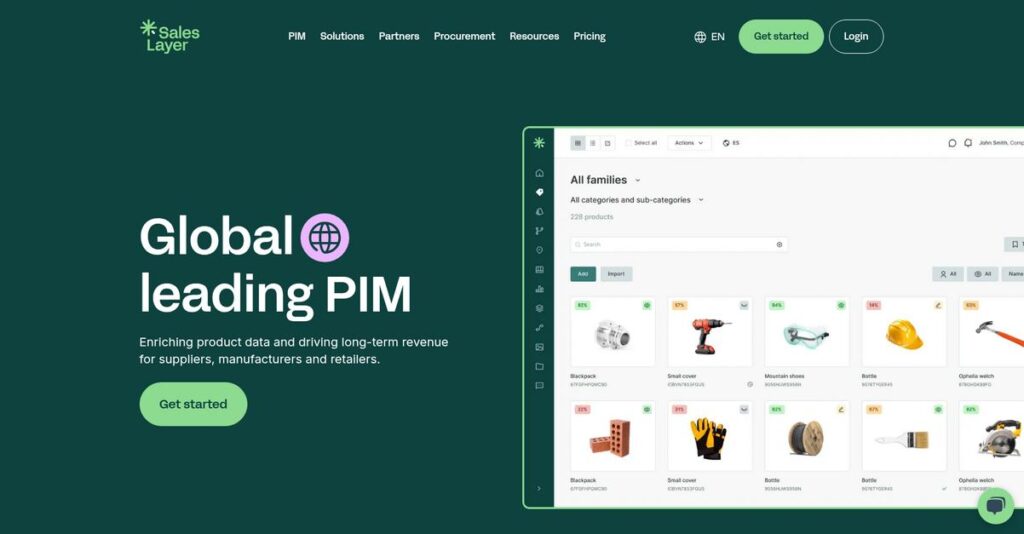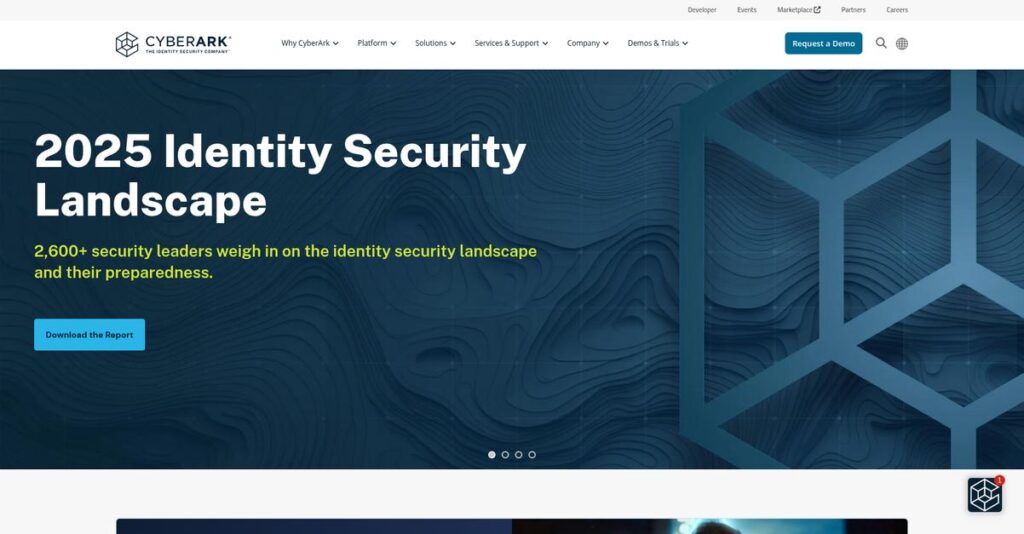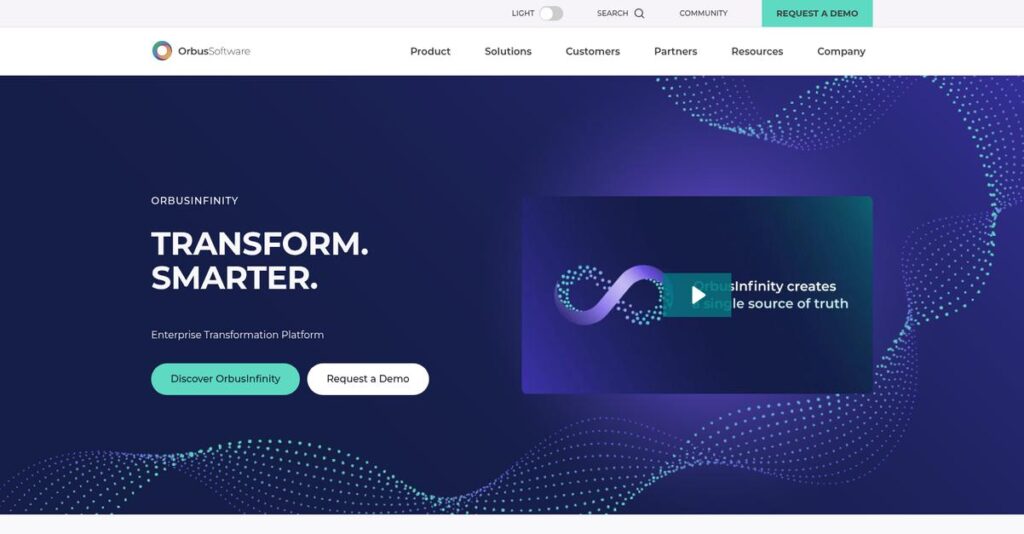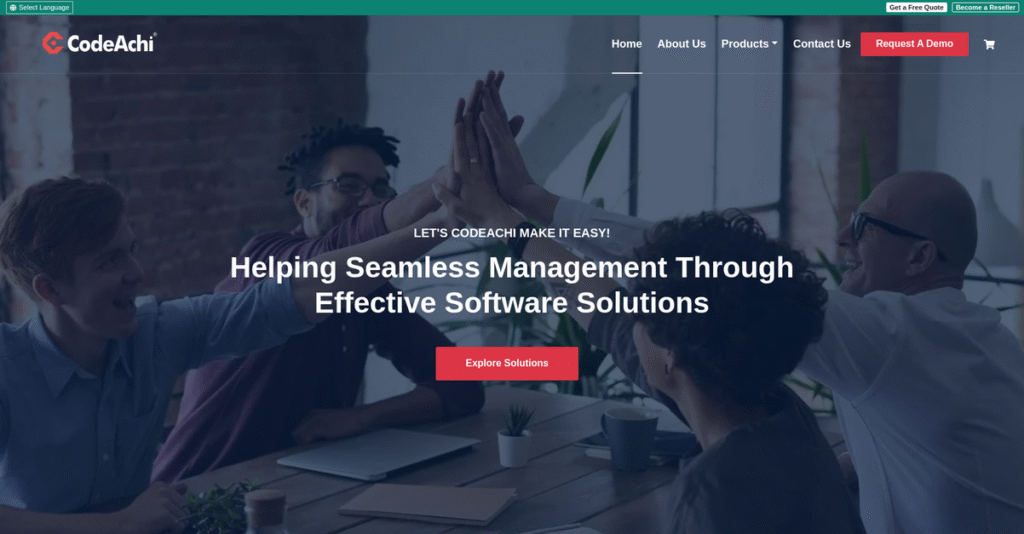Spreadsheet chaos slows down product launches.
If you’re researching Sales Layer, chances are your product data is scattered across ERPs, Excel files, and multiple departments—and that mess is standing in your way.
But here’s the thing: your team is stuck cleaning up data, spending hours chasing down the right info just to keep your sales channels consistent.
That’s exactly where Sales Layer steps in, centralizing all your product content and making it easy to enrich, update, and push to every store or marketplace. In my deep dive, you’ll see how their pre-built connectors, instant digital catalogs, and visual “Quality Score” set them apart from the usual PIM tools.
In this review, I’ll break down how Sales Layer actually saves you time and brings order to your product data chaos, focusing on what really matters for you as a buyer.
Throughout this Sales Layer review, you’ll learn about its features, channel integration, real-life workflows, pricing details, and how it stacks up against top alternatives, helping you compare honestly.
You’ll walk away knowing the features you need to simplify your product management and the facts to make a confident, informed choice.
Let’s get started.
Quick Summary
- Sales Layer is a Product Information Management platform that centralizes and enriches product data across sales channels.
- Best for mid-market companies needing to simplify product data management and speed up multi-channel syndication.
- You’ll appreciate its intuitive interface, fast onboarding, and unique instant catalogs that empower non-technical teams.
- Sales Layer offers a free plan for small catalogs plus tiered paid plans requiring contacting sales for pricing and demos.
Sales Layer Overview
Sales Layer has been around since 2013, based in Valencia, Spain, with a mission to simplify product information management for marketing and e-commerce teams. They focus on making product data centralization accessible without heavy IT reliance.
What sets them apart is how they serve mid-market firms while scaling for SMBs and larger enterprises. They work mainly with companies that need to streamline product content management across multiple sales channels without complicated setups or long implementations.
A smart move was their €25 million Series B funding round in 2022, which fueled international growth and ongoing product development—details you’ll want to note in this Sales Layer review.
Unlike some bigger PIM vendors, Sales Layer positions itself around ease of use and accelerated deployment, giving business users control without sacrificing necessary automation or integration depth. You’ll notice it feels designed by people familiar with real-world product management challenges.
They work with a broad customer base ranging from mid-sized retailers and manufacturers to distributors managing extensive product portfolios.
Right now, their strategic focus is on expanding channel connectors and automation workflows, aligning with how buyers increasingly demand faster time-to-market and consistent product content everywhere.
Now let’s examine their capabilities.
Sales Layer Features
Product data chaos slows down growth.
Sales Layer is a single solution Product Information Management (PIM) platform focused on centralizing and enriching product data chaos. Here are the five main Sales Layer features that tackle common issues in managing product content effectively.
1. Core PIM & Data Centralization
Struggling with fragmented product information everywhere?
Scattered product data across spreadsheets and ERPs leads to errors and wasted time. This inconsistency frustrates teams and customers alike.
Sales Layer’s Core PIM feature consolidates all your product data into one centralized source. Its flexible data model supports custom fields and families, allowing you to tailor product attributes precisely. From my testing, the import options (Excel templates, ERP connections, API) worked smoothly and ensured your data stays accurate.
This means you can finally maintain consistent, up-to-date product info across all sales channels without double entry.
2. Product Data Enrichment & Quality Control
Tired of incomplete, unappealing product descriptions?
Raw ERP data rarely converts well because it’s often missing details and quality formatting. This hurts customer trust and SEO rankings.
Sales Layer offers an intuitive enrichment interface where your marketing team can bulk-edit, add SEO-ready content, and manage translations. The Quality Score visually tracks data completeness, turning enrichment into a collaborative, gamified process. Here’s what I found: this feature really motivates teams to deliver better content faster.
The result is improved product content consistency that boosts buyer confidence and search engine visibility.
3. Channel Connectors & Syndication
Manually uploading data wastes too much time.
Sending product info to multiple channels often requires repetitive formatting and uploads, which leads to errors and slow go-to-market steps.
Sales Layer provides pre-built connectors for major platforms like Shopify and Amazon. After setting up your mappings, you syndicate data effortlessly on demand or schedule. From my testing, the automated transformations for each channel’s requirements were reliable and saved hours weekly.
This helps you scale quickly and keep pricing, inventory, and descriptions synchronized across every marketplace.
- 🎯 Bonus Resource: While discussing product data’s impact on business, understanding how to drive data decisions is equally important for success.
4. Instant Catalogs
Creating custom catalogs is a slog.
When sales reps or distributors need specific catalogs, designing and updating PDFs slows the sales cycle and creates outdated versions.
Sales Layer’s Instant Catalogs feature lets you choose products and generate shareable, interactive digital catalogs instantly. You customize templates and fields per audience without design help. What I love here is the catalog data stays linked live to your PIM — always current. This feature cuts catalog creation from days to minutes.
So your sales teams can send clients accurate, professional catalogs anytime without delays.
5. Workflows & Automation
Managing product enrichment is often chaotic.
Without clear processes, product content updates get stuck or inconsistent, causing delays and frustration among teams.
Sales Layer allows you to configure simple workflows and approval chains, automatically assigning tasks and tracking progress. I found the audit trail and automated notifications especially helpful for keeping everyone accountable from enrichment to final approval.
This means your product data quality improves consistently while speeding up time-to-market.
Pros & Cons
- ✅ Centralized product data eliminates spreadsheet chaos
- ✅ Quality Score motivates better product content
- ✅ Extensive channel connectors speed marketplace syndication
- ⚠️ Limited built-in advanced digital asset management features
- ⚠️ Custom integrations may require technical expertise
- ⚠️ Some advanced workflow rules need improvement
These Sales Layer features work together as a centralized, efficient PIM platform that unifies product data management and streamlines enrichment workflows, setting you up for smoother product launches and better sales outcomes.
Sales Layer Pricing
Confused about actual costs behind pricing?
Sales Layer pricing follows a tiered structure mixed with custom quotes, meaning you’ll need to contact their sales team for precise costs. Still, from my research, they offer a free forever plan plus Pro and Business tiers with reported starting prices, giving you some idea of budget ranges before engaging sales.
| Plan | Price & Features |
|---|---|
| Free Forever | Free • 1 user • 1 channel connector • 1,000 SKUs • 5 GB storage |
| Pro | Approx. $600–900/month • Multiple users • 3–5 channel connectors • 5,000–10,000 SKUs • Increased storage • Instant Catalogs |
| Business | Approx. $1,500–2,500+/month • Higher user limits • 50,000+ SKUs • More channels • Print publishing connector (InDesign) • Advanced workflows & permissions |
| Enterprise | Custom pricing – contact sales • Custom SKU & user limits • Dedicated support & SLAs • Custom connector development |
1. Value Assessment
Flexible pricing value for growth.
From my cost analysis, what stands out is how Sales Layer pricing mixes transparent entry points like the Free Forever plan with scalable tiers tailored to business complexity. Their approach balances accessibility with powerful features, and the tiered model supports diverse requirements without forcing unnecessary spend. Pricing scales logically by SKU counts, users and channel connectors, so you pay for what you really use.
Budget-wise, this means your costs stay reasonable as you expand product catalogs and teams.
2. Trial/Demo Options
Free plan eases evaluation.
Sales Layer offers a Free Forever plan that lets you trial core PIM functionality at no cost, alongside personalized demos for in-depth evaluation. What I found helpful is their free tier serves as an extended hands-on trial while demos provide tailored walkthroughs to clarify how pricing aligns with your needs. This transparency helps you avoid surprises before funding a larger plan.
You can confidently assess fit and value before committing your full budget.
3. Plan Comparison
Choose plans by scale.
The Free Forever plan suits very small businesses or those just testing PIM basics, while the Pro and Business plans add key features for growing and mid-market companies. What matters is the feature-to-price balance across tiers, especially SKU limits and connector counts. Enterprise plans are tailored, so you only pay for high-volume or specialized needs. This approach lets you match pricing closely to daily usage without wasted capacity.
So for your business, pick a plan that fits your product volume and channel complexity.
- 🎯 Bonus Resource: Before diving deeper, you might find my analysis of sustainability software solutions helpful for your business.
My Take: Sales Layer’s pricing approach smartly combines a free entry point with scalable paid plans, making it ideal for SMBs and mid-sized companies focused on growing product catalogs efficiently without overpaying.
The overall Sales Layer pricing offers scalable value suited to different business sizes.
Sales Layer Reviews
Can you trust what users really say?
I examined Sales Layer reviews from multiple platforms like G2, Capterra, and TrustRadius to provide you with a clear view of user experiences. From my review analysis, I highlight common satisfaction themes alongside constructive criticisms to help you understand what actual customers think about Sales Layer.
Users show strong positive sentiment.
- 🎯 Bonus Resource: Before diving deeper, you might find my analysis of best speech therapy software helpful.
1. Overall User Satisfaction
From the reviews I analyzed, Sales Layer maintains an average rating near 4.6 stars, reflecting overall positive feedback. What stands out is how users consistently praise the platform’s ease of use, highlighting both straightforward onboarding and daily operation. These reviews suggest that most customers find value quickly, benefiting from a solid balance of functionality and accessibility.
The main satisfaction drivers include intuitive design and responsive customer support.
2. Common Praise Points
Users often love its simplicity.
What I found in user feedback is how frequently users compliment the intuitive interface and helpful customer support. Many reviews emphasize the fast onboarding and user-friendly environment, which reduces training time for teams without technical expertise. Frequent mention of excellent support staff also reinforces this positive experience across platforms.
These praised features mean your team can adopt Sales Layer quickly and confidently with minimal disruption.
3. Frequent Complaints
Some frustrations focus on advanced features.
Review-wise, the most common complaints involve the desire for more robust Digital Asset Management functions and occasional challenges with custom integrations. Users note that setting up less common connectors sometimes requires technical effort beyond basic setups. These issues tend to be described as manageable rather than deal-breaking.
For your situation, this means routine use is smooth, but you might need extra resources if you have complex integration needs.
What Customers Say
- Positive: “The onboarding process was surprisingly fast. The team guided us through data import quickly.” (G2 Review)
- Constructive: “Setting up custom connectors took some technical effort and wasn’t as straightforward as we hoped.” (Capterra Review)
- Bottom Line: “Great user experience and support; ideal for teams needing a simple PIM solution.” (TrustRadius Review)
The overall Sales Layer reviews reveal a clear pattern of reliable user satisfaction with some minor limitations for advanced users.
Best Sales Layer Alternatives
Too many options for product information management?
The best Sales Layer alternatives include several strong contenders each better suited for different business sizes, budgets, and specific use cases you might have in managing product data effectively.
1. Akeneo
Need deep customization for complex enterprises?
Akeneo shines when your business has very intricate product hierarchies and demands advanced data governance with customization. From my competitive analysis, Akeneo offers superior data modeling and enterprise-grade features that Sales Layer’s simpler approach can’t match, but it comes with a higher price and implementation effort.
You should choose Akeneo if you’re a large company with dedicated IT resources needing extensive tailoring beyond Sales Layer’s out-of-the-box ease.
2. Salsify
Focus on winning the digital shelf?
Salsify is your go-to alternative if your priority is combining PIM with digital shelf analytics to track product performance on major retailer platforms. What I found comparing options is that Salsify delivers integrated analytics alongside content management, whereas Sales Layer keeps things more focused and cost-effective without that layer.
Opt for Salsify when your business depends heavily on measuring and optimizing retail marketplace presence beyond just data centralization.
3. Plytix
Unlimited users on a tight budget?
Plytix is an attractive alternative if you need unlimited user seats bundled in affordable plans and a very user-friendly interface. Alternative-wise, Plytix competes closely on ease of use and pricing, though Sales Layer’s unique features like Instant Catalogs might better serve teams needing dynamic sales materials.
You’ll want to consider Plytix if controlling user licensing costs is critical and your workflows align well with its feature set.
4. Pimcore
Need an all-in-one digital platform?
Pimcore stands out as an alternative when you want a highly extensible open-source solution that includes not only PIM but DAM, CMS, and e-commerce frameworks. From my analysis, Pimcore suits organizations with strong development teams willing to manage complex, custom platform deployments versus Sales Layer’s turnkey SaaS simplicity.
Choose Pimcore if you require a unified digital experience and have the technical capacity to build and maintain it yourself.
Quick Decision Guide
- Choose Sales Layer: Mid-market teams needing fast, easy PIM setup and active catalog creation
- Choose Akeneo: Large enterprises with complex product models and customization needs
- Choose Salsify: Businesses focusing on digital shelf analytics and retail marketplace success
- Choose Plytix: SMBs that require unlimited user seats with straightforward usability
The best Sales Layer alternatives depend largely on your business size, technical resources, and specific product management goals rather than just feature lists.
Setup & Implementation
How complex is Sales Layer implementation really?
In this Sales Layer review, I’ll break down the deployment approach and give you a practical view of what’s involved. The goal is to set realistic expectations around Sales Layer implementation from the setup phase through adoption.
1. Setup Complexity & Timeline
Data prep is the real sticking point.
Sales Layer implementation typically takes only a few weeks for most mid-market businesses. From my implementation analysis, the most time-intensive part is cleaning and mapping your existing product data, not configuring the platform. Sales Layer’s onboarding team provides strong hands-on support during this phase, speeding up setup.
You’ll want to prepare your product data upfront and assign team members to collaborate closely with onboarding specialists.
- 🎯 Bonus Resource: If you’re also looking into optimizing retail strategies, my article on best planogram software covers shelf planning.
2. Technical Requirements & Integration
No heavy infrastructure needed here.
Since Sales Layer is cloud-based, you can access it via any modern browser without installing servers or extra hardware. What I found about deployment is that custom integrations require some developer involvement, especially if you go beyond built-in connectors. This means your IT team or external resources need familiarity with REST APIs.
Ensure your IT staff or partners are ready to assist with any necessary API integrations and ongoing platform connectivity.
3. Training & Change Management
User-friendly design lowers training barriers.
The platform’s intuitive interface means most marketing and e-commerce team members get up to speed with just a few hours of guided training. From my analysis, the minimal learning curve makes adoption much smoother compared to traditional PIM systems, but you’ll still want to manage expectations and communicate clearly about new processes.
Focus on early user engagement and have champions to promote adoption and best practices within your teams.
4. Support & Success Factors
Responsive support makes a big difference.
Sales Layer’s support team earns high marks for fast and helpful guidance via email and chat throughout implementation. What I found about deployment is that access to knowledgeable support accelerates troubleshooting and keeps the project on track.
For success, maintain open communication with the vendor’s customer success team and plan for periodic check-ins post-launch to reinforce adoption.
Implementation Checklist
- Timeline: Typically 3-6 weeks depending on data complexity
- Team Size: Cross-functional team including marketing and IT
- Budget: Allocate time for data cleaning and possible developer support
- Technical: Browser access plus developer resources for custom integrations
- Success Factor: Clean product data and strong onboarding collaboration
From my implementation analysis, Sales Layer implementation offers a relatively smooth onboarding experience for most businesses, with an emphasis on data readiness and hands-on vendor support as keys to success.
Who’s Sales Layer For
Is Sales Layer the right fit for your business?
In this Sales Layer review, I’ll help you determine who benefits most from this platform by analyzing specific business scenarios, team sizes, and use cases so you can quickly see if it matches your needs.
1. Ideal User Profile
Best for mid-market product managers and marketing teams.
If you’re managing a growing product catalog beyond spreadsheets, particularly in retail, manufacturing, or distribution, you’ll find Sales Layer effective. From my user analysis, teams that need centralized, consistent product data syndication will gain the most value here. Sales Layer’s intuitive interface suits e-commerce managers and marketers who want easy control without heavy IT dependency.
You’ll succeed when you need faster time-to-market and improved data accuracy across multiple channels.
2. Business Size & Scale
Ideal for mid-market businesses scaling product data management.
Sales Layer works well for companies handling anywhere from 1,000 to over 100,000 SKUs with teams coordinating product info lifecycle. What I found about target users is that mid-size businesses often hit the sweet spot between flexibility and simplicity in this platform’s capabilities. Smaller startups might find it too robust, while very large enterprises may require more complex solutions.
Evaluate your SKU volume and team collaboration needs to judge if your scale fits comfortably.
3. Use Case Scenarios
Strong fit for multi-channel e-commerce and marketing workflows.
You’ll find this software particularly useful if your workflows include syndicating product details across marketplaces, enriching digital assets, and streamlining collaboration between product and marketing teams. From my analysis, its strengths lie in accelerating product content updates and reducing manual errors for online sales channels.
If your top priority involves syncing rich product information across multiple platforms quickly, Sales Layer fits well.
4. Who Should Look Elsewhere
Not ideal for enterprise-grade DAM or highly customized integrations.
Sales Layer may fall short if you need advanced Digital Asset Management within the platform or require complex, custom connector setups. From my user analysis, companies needing extensive DAM features or deep IT-driven customization should consider specialized PIM or DAM systems like Salsify or Akeneo.
If your business demands enterprise-level integration or asset management, exploring those alternatives makes more sense.
Best Fit Assessment
- Perfect For: Mid-market B2C/B2B companies managing product data efficiently
- Business Size: 10-200+ employees managing 1,000-100,000+ SKUs
- Primary Use Case: Multi-channel product info syndication and enrichment
- Budget Range: Moderate investment suitable for mid-market teams
- Skip If: You need advanced DAM or highly customized integrations
From this Sales Layer review, I believe it’s best suited when your situation calls for centralized, scalable product information management without enterprise complexity.
Bottom Line
Is Sales Layer the right PIM for you?
This Sales Layer review provides a balanced final assessment based on ease of use, pricing, and feature set to guide your decision confidently.
1. Overall Strengths
User-friendly platform excels in product information management.
Sales Layer delivers a highly intuitive interface and strong customer support that simplify PIM adoption for marketing and e-commerce teams. From my comprehensive analysis, its simplified data enrichment and syndication accelerate cross-channel consistency without heavy IT involvement or steep learning curves.
These strengths enable faster onboarding and efficient product data handling critical for scaling sales operations effectively.
2. Key Limitations
Advanced DAM and integration options need improvement.
While Sales Layer covers core PIM functions well, it lacks robust Digital Asset Management and demands more technical effort for complex or uncommon integrations. Based on this review, limited out-of-the-box DAM features may require third-party tools to complement product media management efficiently.
These limitations represent manageable trade-offs for many mid-market businesses but could hinder larger enterprises with advanced digital content needs.
3. Final Recommendation
Recommended for SMBs prioritizing simplicity and support.
You should choose Sales Layer if you want an accessible PIM with excellent onboarding and customer service, especially as a mid-market or SMB user. From my analysis, this solution offers great value for teams needing quick, scalable product data control without excessive customization.
Your next step is to try a demo or trial to verify fit and gain confidence before full adoption.
Bottom Line
- Verdict: Recommended for SMBs and mid-market businesses
- Best For: Marketing and e-commerce teams needing straightforward PIM
- Biggest Strength: Intuitive interface with outstanding customer support
- Main Concern: Limited advanced DAM and complex integration options
- Next Step: Schedule a demo or start a trial on Sales Layer’s website
This Sales Layer review concludes with strong confidence in its value for targeted users, making it a solid choice for many growing businesses.





